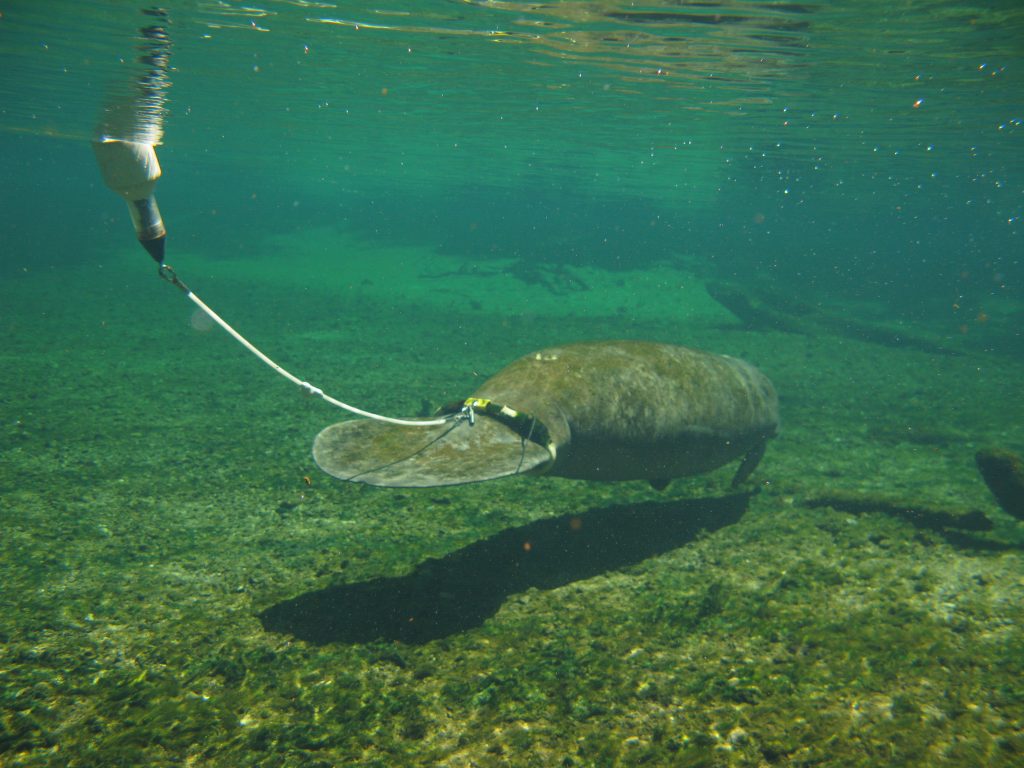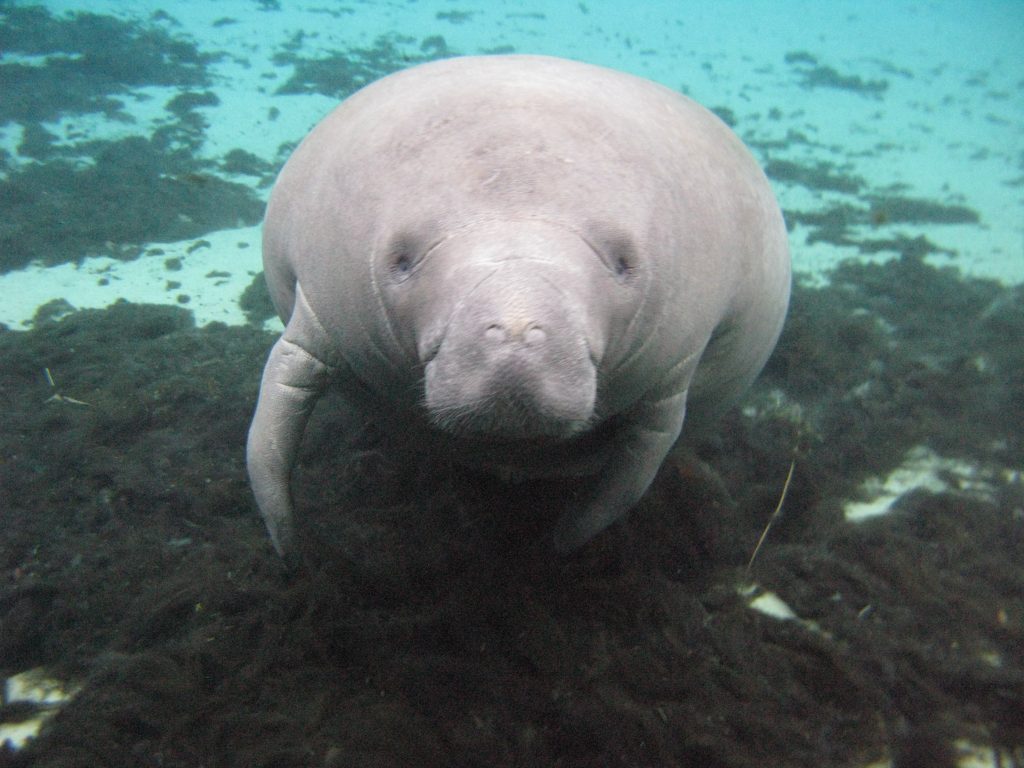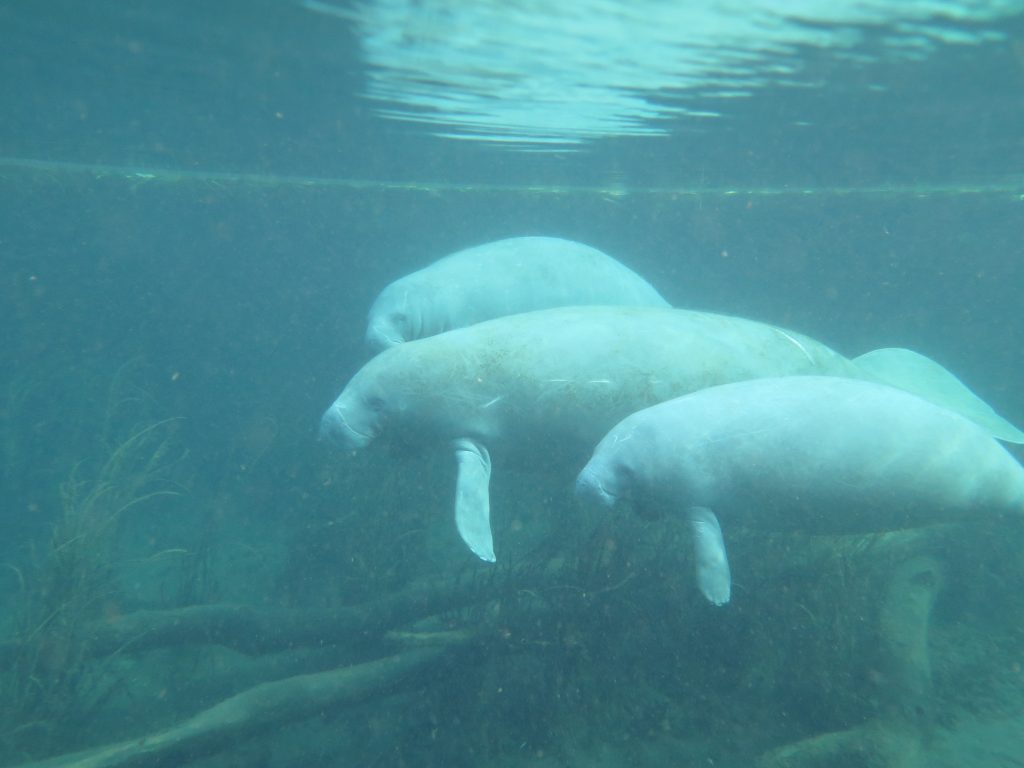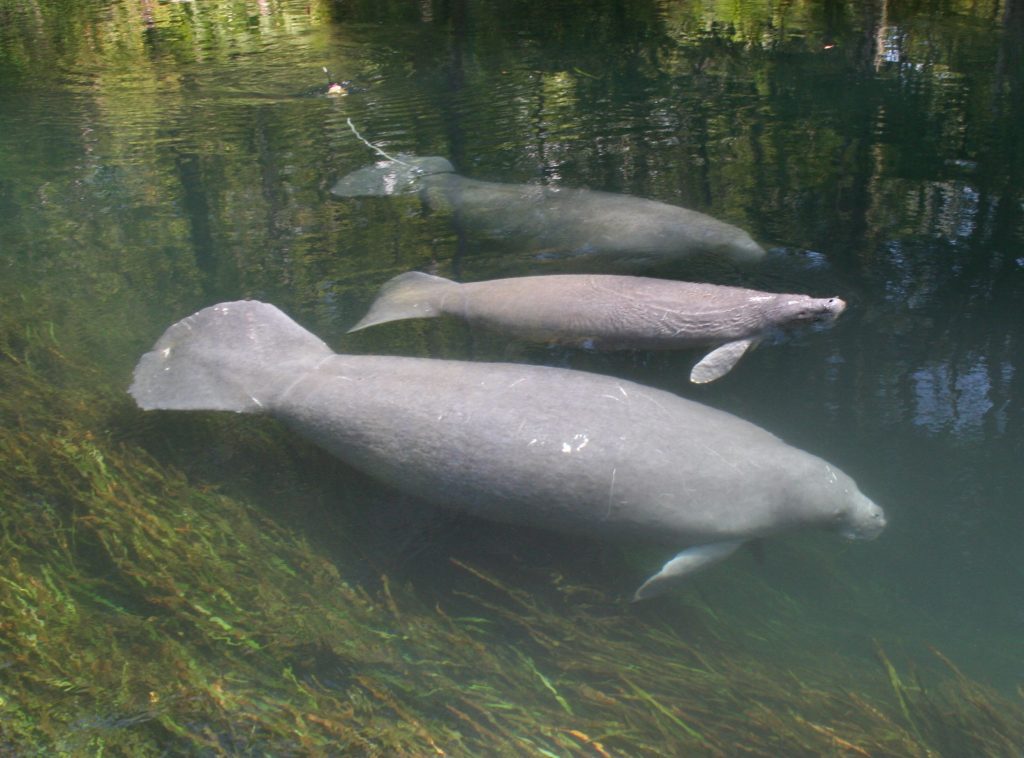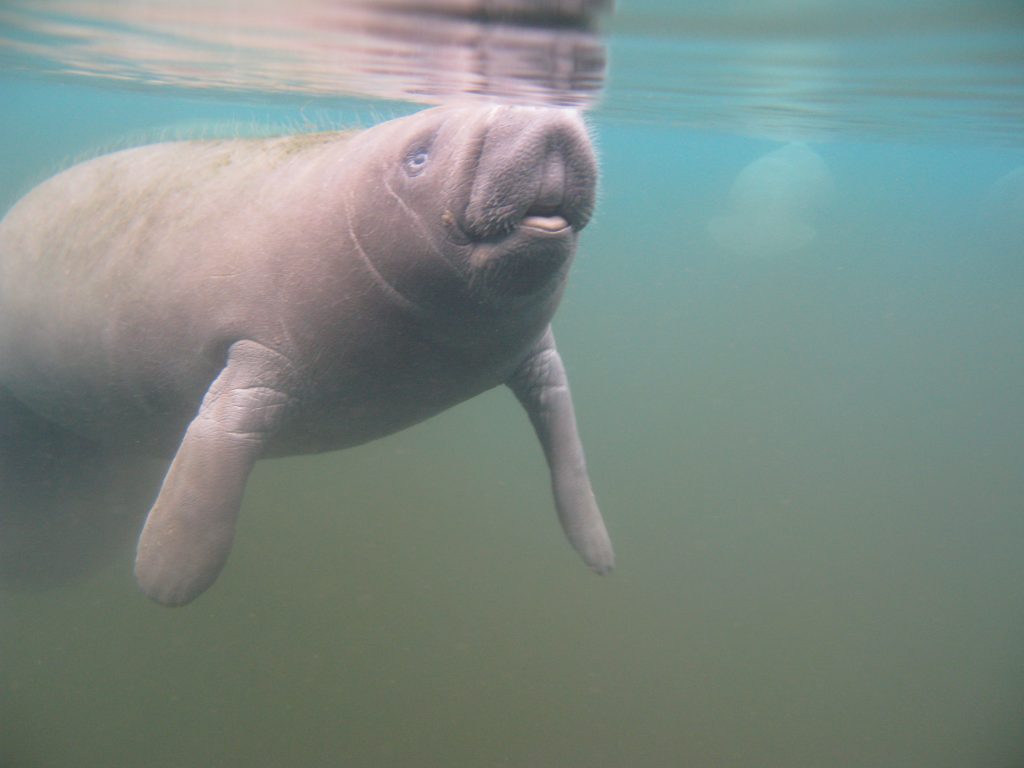CMA Research Institute staff have extensive experience tagging and tracking manatees in Florida and around the world. Satellite tracking is a tool researchers use to answer an array of questions. The ability to locate manatees in the wild and document their habitat use, movements, and behavior is invaluable.
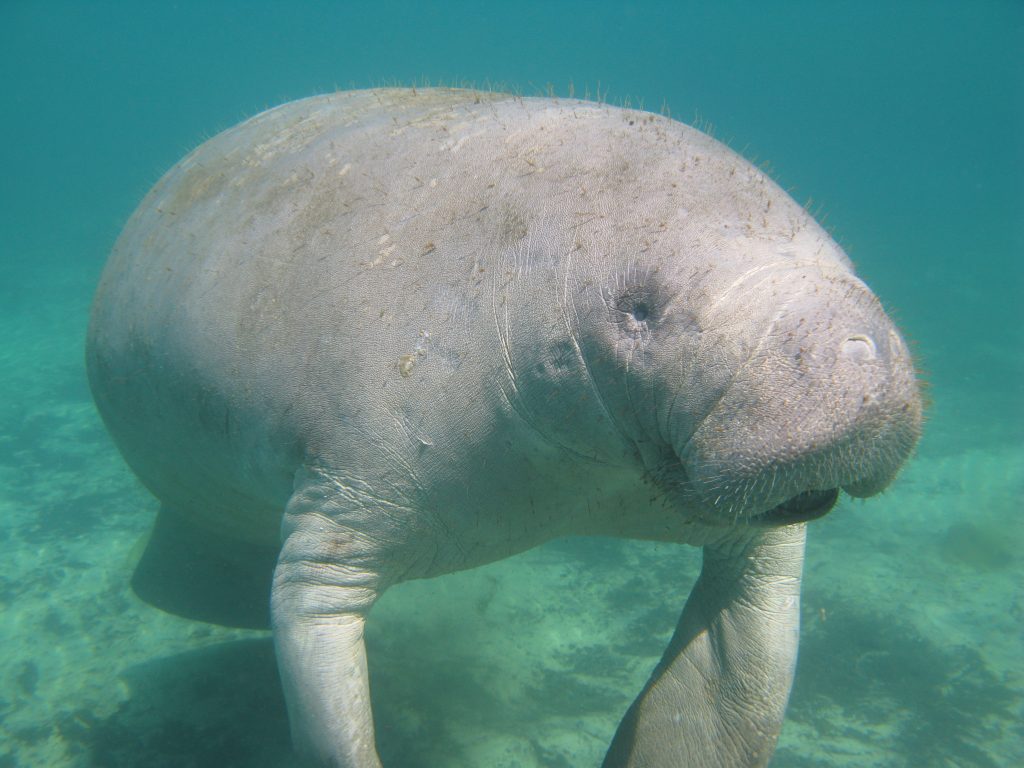
What is a manatee tag?
Manatee tagging gear consists of a belt, a tether, and a GPS tag. The belt fits around the peduncle area of the manatee and is designed to break free should it become entangled.
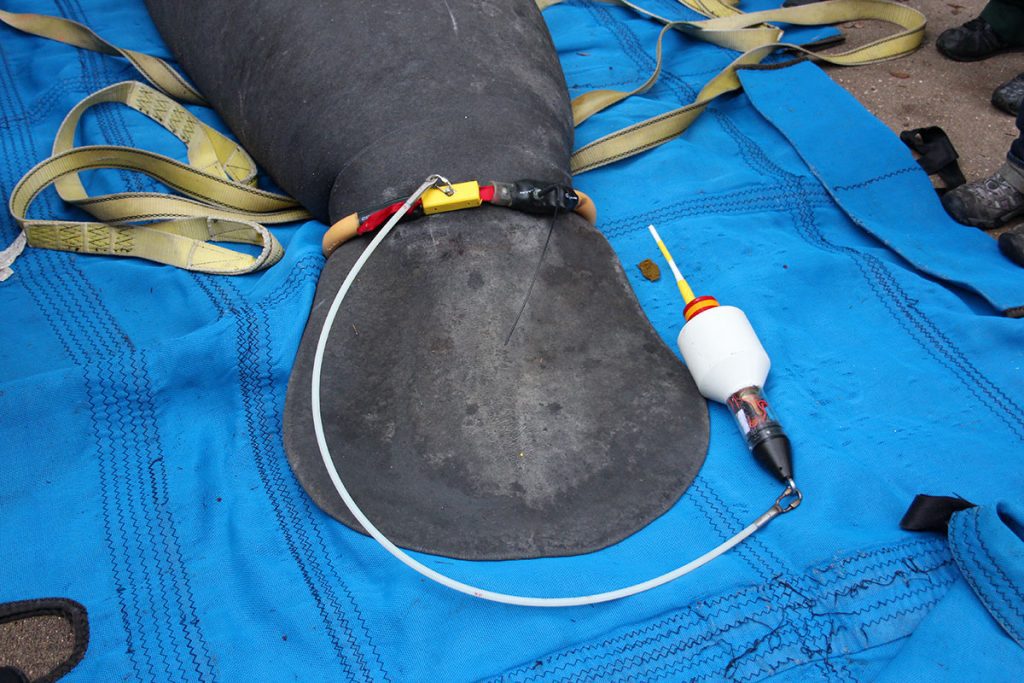
Why tag a manatee?
Tags provide tracking information which help researchers enhance a rehab manatees survival after release and answer specific questions of importance to conservation and management of this imperiled species. The tag and tracking equipment does not interfere with the manatee’s natural behavior or movement. It is designed to break free should it become entangled.
View Manatee Tracking Maps
Equipment FAQs
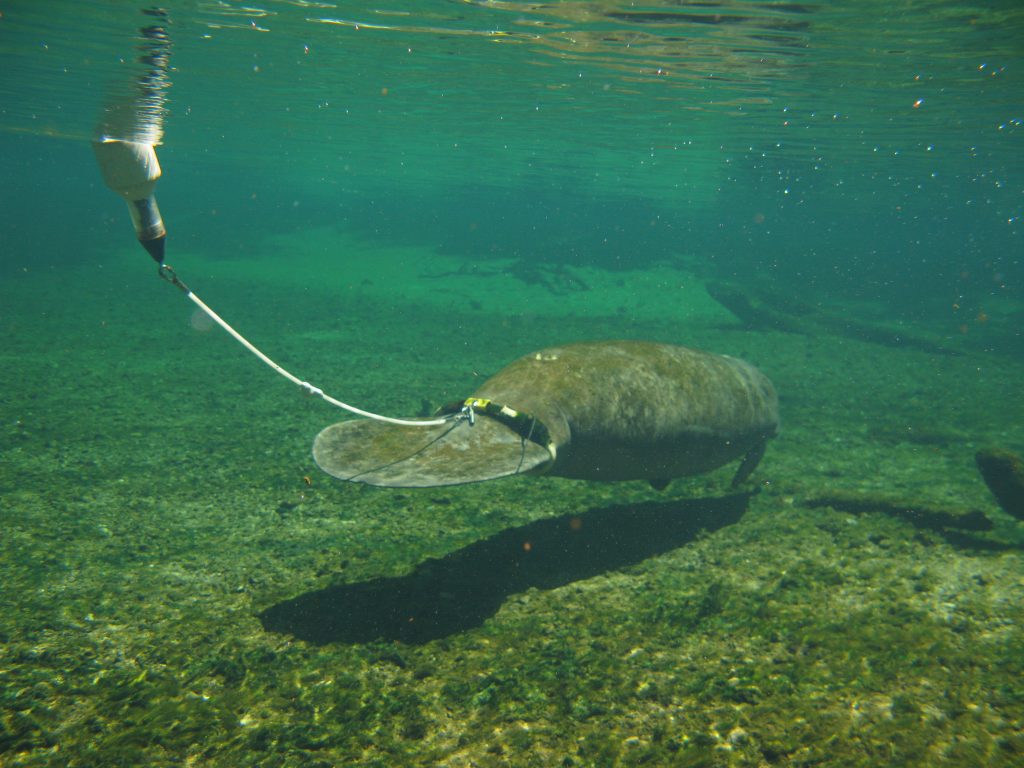
The GPS equipment is used to collect data on where the manatee travels, water temperature and other factors. This allows researchers to know what waterways the manatee is using, where it is finding food, and what warm water sites it uses. This information is crucial to knowing how to best protect these areas for manatees. Also, some manatees released from rehabilitation may not have a lot of experience in the wild, such as orphan calves. The tracking equipment allows researchers to monitor their acclimation to their new environment and intervene if necessary.
Unlike some tracking devices that must be imbedded in an animal by surgery or piercing, this tag is fitted passively. A foamed belt is placed around the manatee just above the tail. A tether is connected to the belt, and a GPS tag is attached to the tether. The equipment is built for each animal receiving it based on their measurements to ensure a good fit.
Manatee tracking equipment was tested and modified extensively over 20 years ago to ensure that the gear does not impede the natural behavior of manatees. Manatees have been observed, feeding, socializing, mating and even giving birth without incident, all while wearing this equipment. In fact, when our researchers are in training, we will swim with the gear ourselves and cannot feel the gear while we swim.
The housing of the tag contains the components for the GPS, VHF, and the batteries. It is then encased by a foam collar which makes up the bulk of the tag. This collar helps to provide balance for the tag in the water and protects the critical components from damage. Though the tag looks cumbersome it is quite light, especially for a manatee, which can weigh between 600 -1500 pounds.
All the equipment is made with breakaway points so that if it becomes entangled it will break free from the animal. Researchers are then able to track the location of the gear for recovery.
Manatees ideally will retain the equipment up to a year depending on the reason they are being tagged. If circumstances prevent the equipment from being removed by researchers, internal components within the gear will allow all the equipment to fall off on its own.
Fifty years ago, the manatee was on the brink of extinction in the United States. Without protections in place the species was losing habitat, food sources and faced ever increasing threats from boat strikes. The scientists who laid the groundwork for the protections the manatees have today, that have allowed them to rebound, did so based on information they gained from these tagging projects. Without knowing where manatees go, how they get there, and what they need to survive, we would not know how to protect them. Sadly, those threats are not decreasing, and it is still very important to understand how these animals are adapting to the current threats, so that we can also adapt to ensure that they never face extinction again.
Call FWC’s Wildlife Alert toll-free number: 1-888-404-FWCC (1-888-404-3922) or #FWC or *FWC on a cellphone or text 847411 with keyword “FWC,” followed by the city and/or county and any information if you see a sick, injured, dead or tagged manatee.
